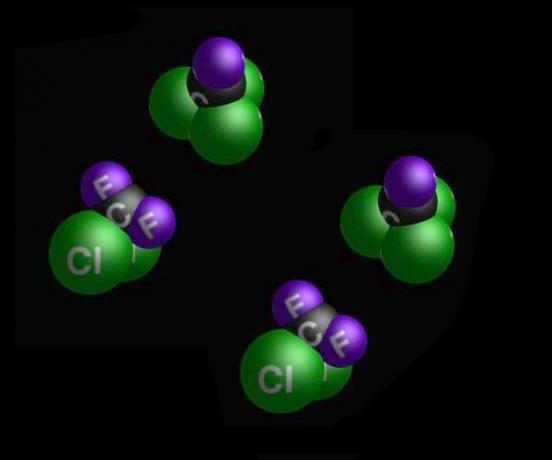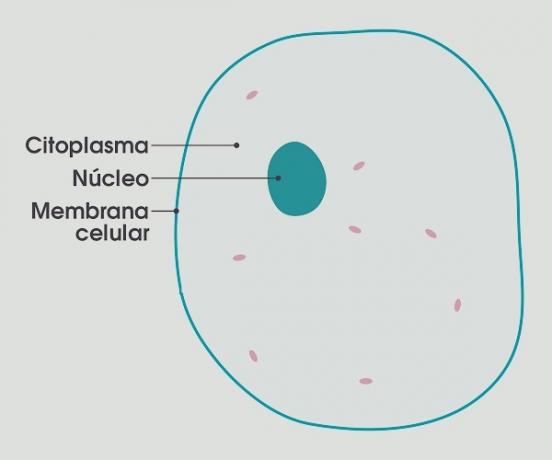A hydrographic basin is a geographically delimited area where all rainwater is captured and drained into a main river through its tributaries.
The tributaries are water courses that are in higher regions and, therefore, flow with the force of gravity, converging to the main river. The main river gives the basin its name.
In the lower parts of a basin are the main river and its mouth, and in the higher parts are the water dividers, which separate the precipitated water between the different river basins.
The main elements of a hydrographic basin are:
- Source: place where the river is born, its origin;
- Tributaries: smaller rivers that flow into the main river;
- Mouth: place where the river flows, it can be another river, a lake, the sea;
- Bed: path taken by the river, space occupied by water courses;
- Watershed: points of high altitude where water courses separate and flow into different basins, also called interfluves.
The largest hydrographic basins in Brazil
Watersheds, also called drainage basins, can be divided into larger or smaller areas. There are large basins, which occupy the territory of several states, but these can be subdivided into smaller basins.
The following are some of the largest basins in Brazil:
Amazon hydrographic basin
With 7,000,000 km2, the Amazon hydrographic basin is the largest hydrographic network in the world and one of the largest freshwater reservoirs on the planet.
In addition to Brazil, this basin extends to territories in Peru, Bolivia, Colombia, Ecuador, Venezuela and Guyana. Its main river, the Amazon River, rises in the Peruvian mountains of the Andes and flows into the Atlantic Ocean.
This basin is home to the Amazon Forest and is located in the following states: Amapá, Pará, Amazonas, Acre, Roraima, Rondônia and Mato Grosso.
- Area: 3,800,000 km2 (in Brazil)
- Main river: Amazons
- Main tributaries: Madeira river, Tapajós river, Negro river, Xingu river, Branco river and Solimões river.
Learn more about Amazon rainforest.
Tocantins-Araguaia hydrographic basin
This is the largest basin located in Brazilian territory alone and comprises the states of Pará, Tocantins, Goiás, Mato Grosso, Maranhão and the Federal District.
This basin has an important electrical potential, with emphasis on the hydroelectric plants of Lajeado and Tucuruí. Furthermore, its rivers are navigable and therefore important for the local economy.
- Area: 960,000 km2
- Main rivers: Tocantins and Araguaia
- Main tributaries: Almas river, Formoso river and Paraná river
Understand what a hydroelectric plant.
São Francisco river basin
The hydrographic basin of the São Francisco River takes its name from this important river to northeastern Brazil, popularly known as the “old chico”. The São Francisco River crosses the Brazilian hinterland, the driest area in the country.
The main course of this basin is supplied by 158 tributaries, with 68 of these rivers being temporary, that is, they dry up during a certain period of the year.
This basin is located in the states of Minas Gerais, Goiás, Bahia, Pernambuco, Alagoas, Sergipe and the Federal District.
Despite the importance of water resources for the region, agricultural and livestock activities are causing deforestation and silting of rivers, harming the water supply.
- Area: 641,000 km2
- Main river: San Francisco
- Main tributaries: Velhas river, Jequitaí river, Paracatu river and Abaeté river
understand what it means siltation.
Paraná hydrographic basin
The Paraná hydrographic basin has 1.5 million km2 considering its portions in Argentina, Paraguay and Uruguay.
With great potential for energy production, this basin is home to Itaipu, which was the largest hydroelectric plant around the world for 21 years and lost his post in 2003 to the Three Gorges Dam, built in the China.
In Brazil, this basin extends through the states of Paraná, Santa Catarina, Rio Grande do Sul, Minas Gerais, Mato Grosso do Sul, Goiás and the Federal District.
- Area: 879,860 km2 (in Brazil)
- Main river: Paraná
- Main tributaries: rio Grande, rio Tietê and rio Paranapanema.
Paraguay hydrographic basin
This basin is located in the territories of Brazil, Paraguay, Argentina and Bolivia and has a total area of 1,000,000 km2. In Brazil, it is located in the states of Mato Grosso and Mato Grosso do Sul.
The rivers in this basin are navigable and have great economic importance for cargo transportation. In Mato Grosso do Sul is the Port of Corumbá, one of the largest river ports in Brazil.
- Area: 365,592 km2 (in Brazil)
- Main river: Paraguay
- Main tributaries: Paraná River, Cuiabá River and Jaurú River
Uruguay watershed
The Uruguay basin is located in the states of Rio Grande do Sul and Santa Catarina and also in Argentina and Uruguay.
It is a basin with great importance for agricultural and industrial activities in the region and also with great electrical potential, with emphasis on the plants of Salto Grande, Itá, Machadinho and Foz do Chapeco.
The Platina or Río de la Plata basin is formed by the union of the Uruguay, Paraguay and Paraná basins.
- Area: 365,000 km2
- Main river: Uruguay
- Main tributaries: Chapecó river, Peixe river, Camaquã river and Forquilha river
Parnaíba hydrographic basin
The Parnaíba basin is located in northeastern Brazil and comprises the states of Maranhão, Piauí and Ceará. Its main river is popularly known as the "old monk".
It is located mainly in the caatinga, a biome with a dry and humid climate. In addition to climatic conditions, pollution and deforestation affect the water supply for the region's residents.
- Area: 340,000 km2
- Main river: Parnaíba
- Main tributaries: Parnaíbinha river, Medonho river and Balsas river
The 12 Brazilian hydrographic regions
Due to the large territorial extension, Brazil was divided into 12 hydrographic regions, each of them composed of basins and sub-basins with similar characteristics.
This division was intended to guide the management and planning of the use of resources in the country, established by Law 9,433/97, also known as the National Resource Policy Water.
The 12 Brazilian hydrographic regions are:
- Amazon hydrographic region
- Tocantins-Araguaia hydrographic region
- Western Northeast Atlantic hydrographic region
- Parnaíba hydrographic region
- East Northeast Atlantic hydrographic region
- São Francisco hydrographic region
- East Atlantic hydrographic region
- Southeast Atlantic hydrographic region
- Paraná hydrographic region
- Paraguay's hydrographic region
- Uruguay's hydrographic region
- South Atlantic hydrographic region
See also the meanings of hydrography, relief and mouth.



